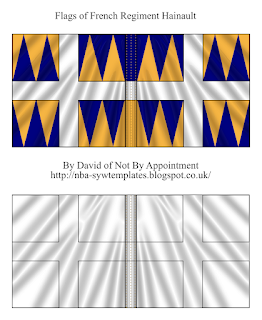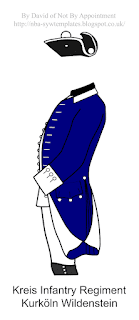I wish everyone who visits my blog and enjoys my flags a Happy Christmas and New Year. 😀 Lots more flags to come in 2023, I hope...
I did think of doing one of my fantasy flags, as I did last year, for my Christmas post but then thought I'd rather do some real flags if I am going to put in some effort - and these French flags do have a slightly Christmassy look about them with their red and white (and blue).
Charrié says that the Colonel's flag carried the arms of the Goyon de Matignon family; these come in several different flavours so I have chosen those of the right period for the flags, I think. No doubt someone will tell me if I have got it wrong!



















































